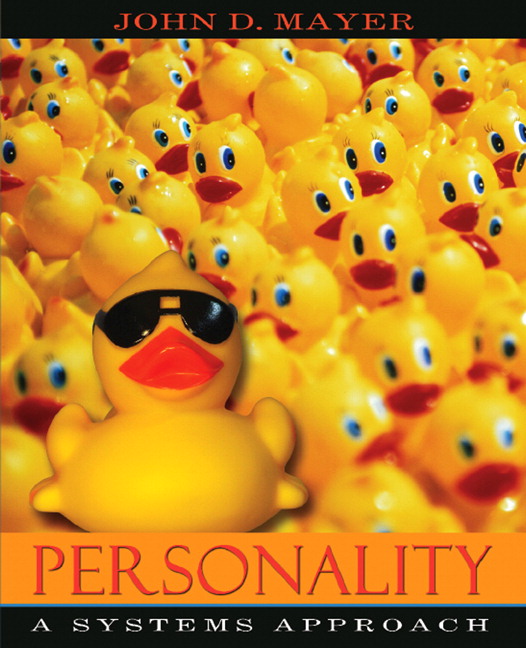
The On-Line Student Guide for
Personality: A Systems Approach
Welcome to the students' site for Personality: A Systems Approach. If you are taking the personality course, this site will offer information and resources around your studies in personality.
How This Book Happened
When I taught my first course in personality psychology, I could hardly imagine that I would end up writing a textbook in the field. Matters began to change, however, just a few years later.
I suppose this book had its beginnings in my dissatisfaction with the first courses in the area I taught.
The traditional approach to the personality course back when I first taught the course involved presentations of the (often contradictory) theories of several major personality theorists -- Sigmund Freud, Carl Jung, Carl Rogers, and the like.
There was little or no integration of the theories, and little or no attention to laboratory evidence that was relevant to these points of view. Because such courses simply rehashed theories of men and women who lived and wrote in the early parts of the 20th century, such courses came to be referred to by some of my colleagues as "walks through the graveyard".
To address this problem, I began to generate handouts of my own to cover more contemporary material that I thought was important to personality psychology. I also started writing some articles about how personality might better be taught.
In the 1991-1992 academic year, I tossed out the textbook I had been using (I no longer remember which one it was!) and began to compile my notes into a book for my students. The early version of this book, Contemporary Psychology: Notes and Essys was printed in our University's Copy Center.
Back in the early 1990s, the classroom notes weren't always ready at the beginning of the semeseter, and I had to send my students back mid-term or so, to pick up more material.
Thankfully, my students seemed receptive to the handouts I gave them, and weren't too bothered by the typos, trailing off of sentences, and the rather idiosyncratic approaches those first notes took.
The classroom notes grew and improved through feedback from my students. I heard when sections were boring, or seemed irrelevant. I especially heard from students after they missed exam questions because the notes were unclear.
When I had started writing, I rarely defined any term. Fortunately, students frequently let me know when they needed a definition. I recently discovered a note I had scrawled to myself on the front of the Fall, 1993 edition. It read: "Add more definitions, including sublimation."
Overall, my students' graceful reception of the early work encouraged me to continue, and they became very excited when, in 2002, I signed a contract for the book with Allyn & Bacon.
Well, this web site is less personal than a classroom, to be sure, but I am hopeful that it will provide at least a modest way to reach out to students beyond my class.
The book surely has come a long way. Students still have many of the same questions, though: "Why study this material?" "How does it matter to my life?" And, of course, "Will it be on the test?".
I hope this site will help answer some of those questions.
Sincerely,
Jack
John D. Mayer